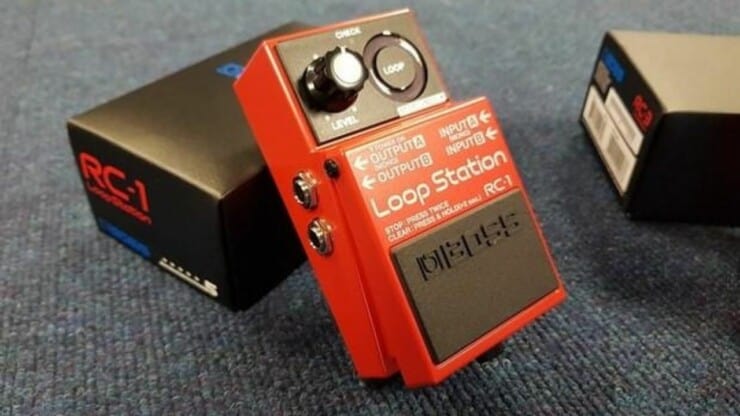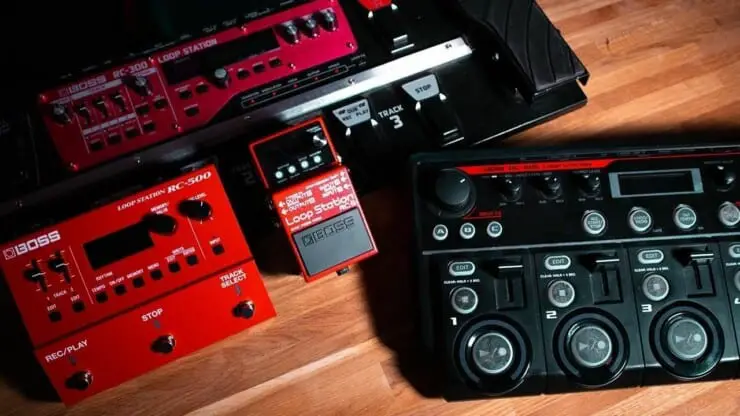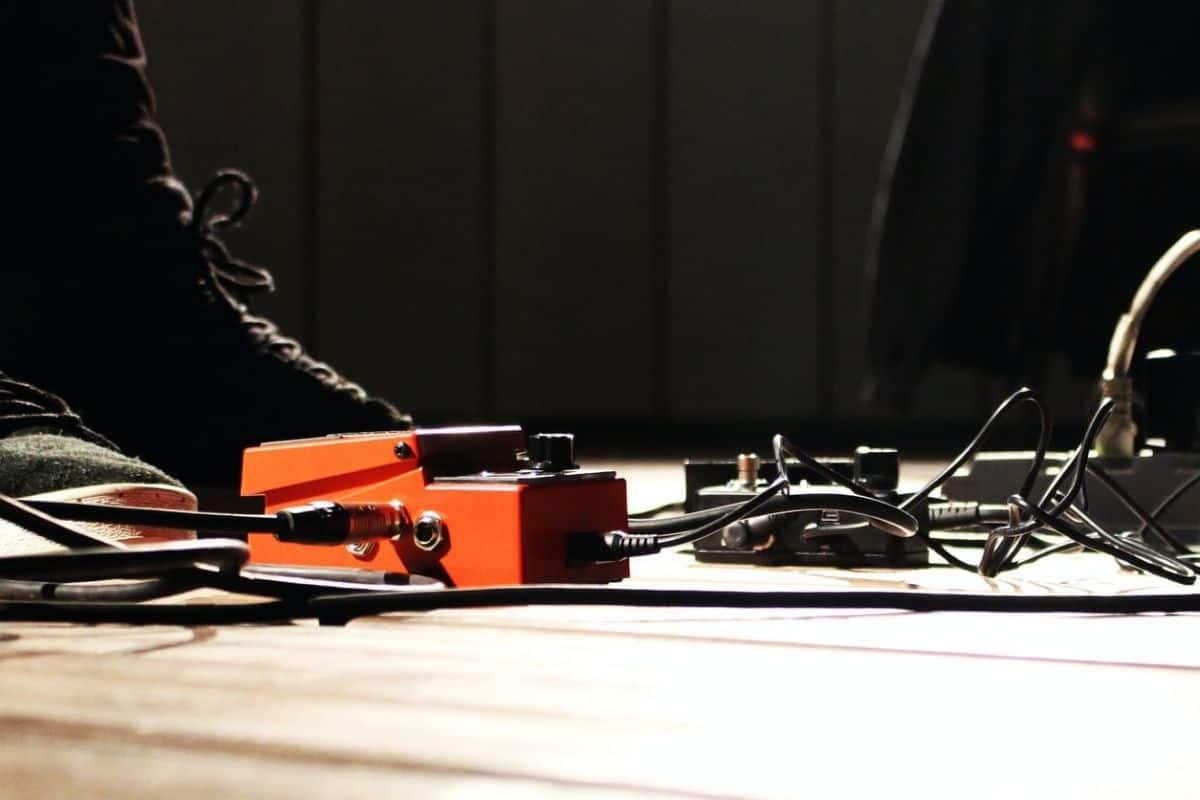Did you just start learning to play the guitar but struggling with different pedal concepts including looper pedals? By the time you’re done reading this article, all your struggles will be over.
Looper pedals are great tools that will help you develop a sense of timing and hitting notes. Practicing playing the guitar with a looper pedal will be a great way to elevate your skills.
In this article, you’ll get to know all about what is a looper pedal, how to set up a looper pedal, reasons why every guitarist should practice with a looper pedal, and more. Continue reading to get all the answers that you’re looking for.
What is a looper pedal?
Looping is essentially a technique that has gradually become incredibly popular among self-sufficient musicians. People who have to develop solo performances and compositions using only their instruments find this incredibly useful. It’ll be great for all types of musicians as it is enriching for singers, instrumentalists, and electronic musicians. Reaching this level of looping takes some time and patience. Looper pedals come in handy and save the day for solo recording musicians.
A looper pedal will be a great way of developing your sense of timing. Moreover, it is also an excellent tool as you can work with it and improve your skills. If you’re a dedicated solo guitarist, you’ll probably want to use a looper pedal. It is a valuable tool for most guitarists as they can loop back on their recordings. It’ll allow you to record riffs and chord sequences and then play the recordings back in a loop. Moreover, you’ll be able to add or overdub it to the loop by adding a second part over the top of the initial recording, and it’ll be added to the loop.
How to set up looper pedal?
When it comes to how to set up looper pedal, you’ll have to decide between two setup types. The two types of setup are the single pedal setup and the multiple pedal arrangement. Knowing the details of the two types of looper pedals will help you decide which is the best way forward.
1. Multiple pedal arrangement
This type of looper setup consists of a pedal that’ll come with multiple loops. In these loops, you can insert other pedals, allowing you to change presets by using individual pedals. This type of setup is often referred to as true bypass loopers. Some of these setups come with a dedicated section with the output to the preamp and input from the preamp. This allows you to make use of four cable methods.
This setup will involve the drives, case compressors, and phasers going onto the loops before the input and output. After that, the other effects follow like reverb, modulation, and delay in the effects loop. This type of pedal arrangement could go in the effects loop or before the amp.
2. Single pedal setup
This setup features a pedal capable of recording short clips of sound that can be repeated later and harmonized with. These short loops run after the effects that you’ll want to be included in the loop. Thus, you’ll be able to let the drives and effects go into the loop before the amp, despite having the loop with delays and reverbs.
How to set up looper pedals in the signal chain?
There are multiple ways to arrange looper pedals in the signal chain, depending on how you want it to function. You can get the simplest setup by positioning it at the end of the signal chain. This way, the looper will capture the exact pedal setup within the loop. It won’t react to the alterations you are doing on the board.
On the other hand, you can even place it between effects. This setup will depend on the audio signals you wish to capture. If you’re connecting it through the effects loop, you’ll be able to use the on/off modulation effects and reverb for influencing the overall sound.

Currently, there are many loopers in the market that come with stereo potential. If you’ve got a stereo delay or reverb, or you want to go straight to the mixer, utilize stereo looping. You can use stereo looping for tracking separate mono instruments and vocal signals by hooking loopers into the mixer bus.
How to arrange multiple looper pedals into the pedalboard?
The way you’re ordering/arranging the pedals will matter if you’ve got multiple looper pedals. There are a few rules that will tell you how to arrange the different pedals. These rules are helpful, but in some instances, they could produce bad results. Moreover, you could even come across conflicting ideas about how you should be arranging the pedals.
While relying on such rules can be quite helpful, it’ll be even more useful if you learn to set up the pedals on your own, depending on your needs. It’ll also be useful to note that some pedals need to go early in the signal chain. Meanwhile, some will need to be added at the end.
You shouldn’t hesitate in experimenting with the arrangement and trying unique combinations of pedals, especially if you’re using multiple pedals. If you’re a keen observer, you’ll learn the order that works best for you. You can even go against the established rules and come up with an out-of-the-box idea. You can even rely on your gut feeling and try to figure out the right arrangement and combinations.
To arrange the pedals, you will require two long audio cables to connect your last pedal in the signal chain to the amp and the first pedal to the guitar. After that, you can also use patch cables to connect the pedals together.
How to practice with a looper pedal in your guitar setup?
There are certain reasons why you need a looper pedal, especially if you’re a beginner. It’ll be of great assistance during practice sessions, and it’ll upgrade your skills. Here are some of the reasons why you must use a looper pedal –
Upgrade your rhythmic ability
One of the biggest plus points of creating loops is that you can use them to get the perfect rhythm. The slightest rhythmic inaccuracy could sound like a considerable error that repeats itself cyclically on each turn of the loop. When you start using the looper, after a while, the metric will become more solid and stable.
Listen to your performance
For improving your skills, it’ll be imperative to be aware of how you’re sounding exactly. When you’re playing, the perception of what you’re hearing will change significantly. Playing solo or in a group, you can make different mistakes that can otherwise go unnoticed. They can be insecure sounds, wrong notes, noises, and more.
It’ll be important to be able to listen to your music as someone outside the process. A simpler and faster way than using a computer or a recorder would be to use looper pedals. You can listen to your performance and learn from your mistakes. Without even realizing it, you’ll start developing your coordination and precision. The loop will become a constant witness while also being an authentic reflection of your sound.
Hear the chord scale relationships
When applying harmony, it’ll be useful to be able to play progressions and chords and hear the effect of different arpeggios and scales. Using a looper pedal, you’ll be able to stack the same melody being played differently. This way, you’ll be able to practice harmony or even different tunings.
Create your backing tracks
Having a backup artist or sample music to accompany your performance will not only be useful, but it’ll also be fun. If you take enough time and effort creating it yourself, aside from adapting to your style and level, you’ll be able to improve both the solos and the rhythmic parts too.
Study different themes with harmony and melody
When you’ve to learn sheet music, jazz standards, or songs featuring melody or encrypted chords, looper pedals will be useful. You’ll be able to assemble them and get an idea of what a composition sounds like.
Get a library of tones
If you’re looking to compare different sounds, it can be difficult to rely just on your memory. If you’ve heard thirty or forty sounds, you’ll no longer know which one to prefer. A great solution when you’re experimenting with the tone and timbre would be to use looper pedals. You can record small samples and use them as reference loops while noting which ones you’ve in the chain, the equalization, and the button positions. Later, you can personalize the tone library and choose which sound is best suited to the musical situation.
Create unique sounds and melodies
Aside from the obvious possibility to create sounds based on multiple tracks, looper pedals will allow you to execute different arrangements with rhythmic combinations. These combinations cannot otherwise be played on one or more instruments. These pedals will allow you to compose new textures by making it possible to layer sounds with different effects.
Which looper pedal to buy?
Looper pedals are exceptional little devices that come in handy during many situations. For a beginner guitarist, a looper pedal will be a true force multiplier. Aside from the different benefits you get, these pedals will have the potential to have a major impact on your tone. With that said, not all looper pedals are created equally. There are certain factors to consider when you’re deciding which looper pedal to buy.
What is your budget?
Before you start digging deep into different looper pedal options in the market, there is one thing to consider. How much can you afford to spend when you’re buying a looper pedal. It’s important to consider before shopping that looper pedals come in a brand range of prices.
There are many affordable models in the market, but there will be many high-end, expensive masterpieces. Figuring out how much you’re able to spend on the looper pedal is a decision that you must make before going further. It’ll be easy to get distracted by the different features some of these loopers have to offer. You shouldn’t spend more than you need to, instead decide upon a budget and stick to it.
Why do you require the looper pedal?
If you’re able to figure out how to use the looper pedal, it’ll help you simplify things. These pedals vary widely when it comes to different specifications and features. For instance, if you require a model that loops one of your guitar sections, you can easily find some simple, inexpensive pedals that get the job done.
Similarly, if you need more loops than one and better recording quality, you’ll need to invest in a complex model. It should be capable enough to cover all of your requirements. Figuring out what you’re going to use looper pedals for should be one of the factors to consider.
Do you plan to use only instruments with the looper pedal?
If you ask guitarists about loopers, they’ll likely tell you that it’s an amazing tool that spices up your music. However, looping the guitars isn’t the only thing that these looper pedals can do. Depending on what type of application you have in your mind, looper pedals could be used with mics and even MIDI controllers.

Naturally, looper pedals that are capable of doing this are more complex than average looper pedals. If you need to use looper pedals with a guitar, there are several exciting options that you can choose from. However, if you require the extra flexibility of using a mic with the looper pedal, the wide range of options could shrink slightly. You’ll need to search extra hard if you want to get your hands on such looper pedals.
What length of loops do you require?
The key feature of looper pedals is the ability to record different segments of a composition and then repeat them. The length of the recording will depend on the mode of the looper pedal you’re going for and its memory expansion capability. The basic looper pedals generally come with a recording length that is almost set in stone. The more flexible looper pedals come with SD card slots, allowing you to increase the length of the recordings significantly.
This will also have a lot to do with the quality of the sound you require. If you want the quality of the recording to be pristine, it’ll eat up more memory on the looper pedal. Luckily, there are many pedal options out there that can give the best possible quality. Meanwhile, they also come with the option to expand memory such that you can record loops for several hours.
Do you require a looper pedal for concerts, live performances, or home use?
Finding out if you’ll be using the looper pedal for live performances or only for home use will be helpful. It’ll help you dictate the choices that you should be going for. If performing live is something you do a lot, you’ll probably like a simple layout that is easy to use on the fly. Interestingly, studies show that using loopers for solo musical improvisation opens up new doors for solo concert performances.
A looper pedal in the form of a stompbox will probably deliver the best results. However, it’ll also depend on what type of features you require in the looper pedal. For home use, you can easily go for as big or clunky as you like. There are many amazing pedals out there for users of all skill levels. However, some of them aren’t that simple to use on a whim and could take time to get used to. These loopers will be great for home use, but might not be the best option for stage use.
Conclusion
Thank you for reading, hopefully, now you know a lot more about looper pedals, what is a looper pedal, how to set up a looper pedal, reasons why every guitarist should practice with a looper pedal, and more. A looper pedal is an exceptional tool for users of all skill levels, as it helps you develop a sense of timing. Moreover, the option of playing back the notes makes it the perfect training partner when playing the guitar alone.
Image Credit:
Images: Gig Gear



